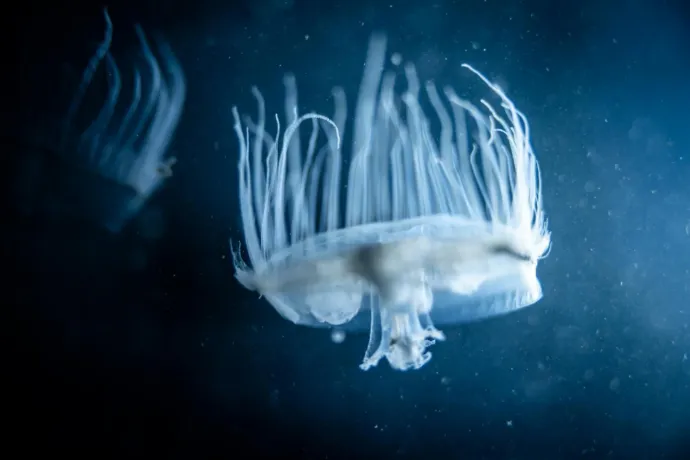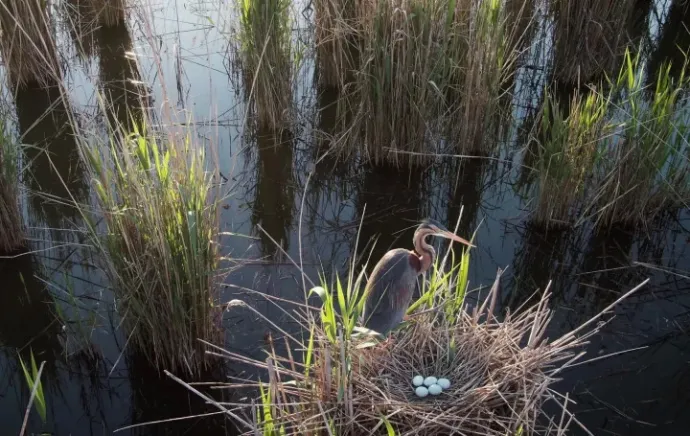
After a summer of drought, dried-up lakes, and disappearing rivers, a new nature documentary about Hungary’s thriving waters came as a relief.
Indeed, Zoltán Fehér’s Past and Present: Our Waters in Human Hands has it all: serene music and humdrum narration, breath-taking aerial and underwater footage, and throngs of vibrant fish, amphibians, and birds.
It’s all shimmer and glimmer – until you realize that it isn’t.
Because the film, at its essence, tells a story of how we, over generations, destroyed Hungary’s scintillating nature, massacred a flourishing wildlife with river regulation, and allowed introduced species to dominate their new habitats.
Suddenly, we realize – this film is not a celebration of Hungarian wildlife as it stands. It’s an in memoriam for what it once was.
We like to proudly say that Hungary is called the country of water, but by today, more than 75 percent of the country’s lakes are man-made, and 90 per cent of the flood-basins have been lost to river regulation.
A 1938 Hungarian Royal Agricultural Ministry map reveals how badly river regulations and swamp draining have changed the Carpathian Basin, and the transformation is striking. Most of the natural bodies of water have been replaced by manmade quarry ponds, reservoirs, and fishponds. Much of the rich biodiversity has been lost.
Even Lake Balaton – touted so frequently as Central Europe’s largest natural lake – has, in effect, become a concrete tank, Zoltán Fehér reveals. The moors, swamps, and reed-filled lakeshores that surrounded the water under Ottoman rule have been replaced with buildings that sprawl over every inch of land, the reed beds have been destroyed. The rich bird diversity has been reduced to swans and wild ducks, and some fish species – like the sabrefish – have all but disappeared.
But no artificial, man-made lake can replace a natural habitat which is home to various species – even if these are the very water bodies that are the last bastions of wildlife today. We may love the quarry ponds' shimmering surface, but the water hides a lifeless benthic at the bottom.
In Esztergom’s Lake Palatinus, for example, only the toughest species – like the North American imported bass – survive. Even more concerning? The appearance of freshwater jellyfish.
Scientists believe these jellyfish – harmless to humans – spread beyond their natural habitat in the Yangtze River system in the 1920s, when they attached themselves to weeds that were traded around the world. Today, they can be found in manmade lakes across Asia, the Americas, Africa, Australia, and Europe – including Hungary.
And they have not been limited to the Palatinus. Hungarian divers reported sightings in Lakes Kotró, Malyi, Omszk, and Kistokaj, while the animals have also emerged in rivers like the Moson-Danube and the Drava.

In one of the film’s shocking scenes, a yearly fish fauna assessment at Lake Tisza’s fish ladder finds that non-indigenous species have overtaken the indigenous ones – which now only account for 10 per cent of the ecosystem. The silver carp, introduced in the 1960s, has come to dominate the habitat – and it continues to spawn millions every year.
It’s not just a Lake Tisza problem. The film shows the dangerous growth of invasive species in Lillafüred’s crystalline streams as well, where the local chub fish has been replaced by the introduced trout.
While the 26-year-old director and cinematographer’s 80-minute movie – which came in second at this year’s VIII. Gödöllő International Nature Film Festival – can stand alone, it comes as a sequel to last year’s Wild Waters: Aqua Hungarica. Zoltán Fehér has plans for third and fourth installments as well, which would cover untouched aquatic biomes and ecosystems and the flora and fauna of the Danube and Tisza rivers.
Translation: Vanda Mayer
If you enjoyed this article, and would like to make sure you don't miss similar content about Hungary in the future, subscribe to the Telex English newsletter!